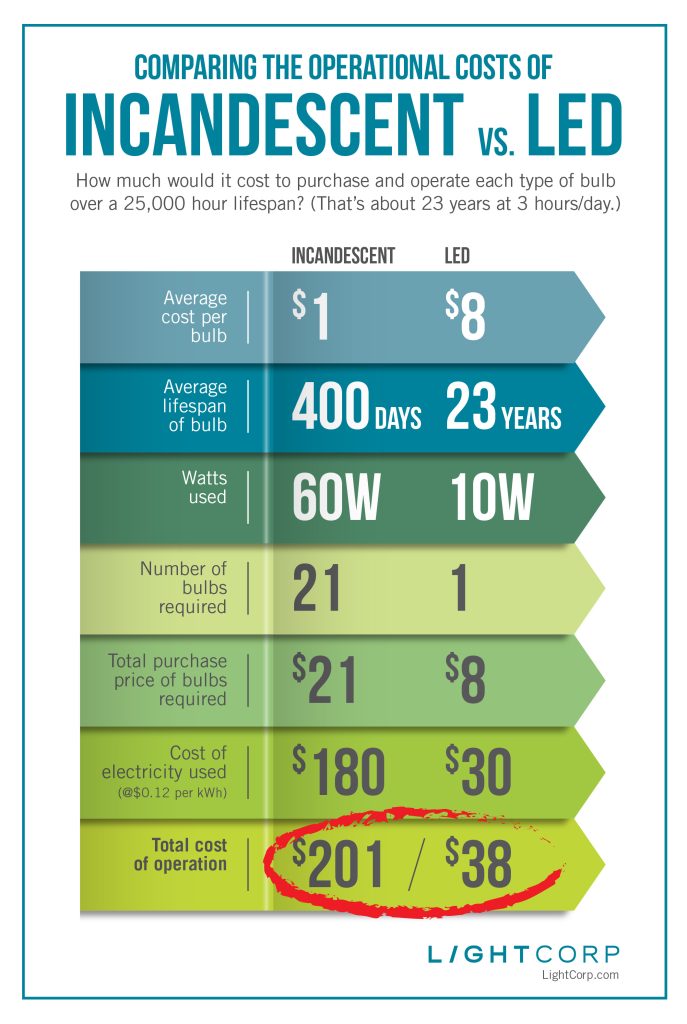When considering the ideal workplace lighting solution, many are quick to turn to inexpensive fluorescent lighting. Up front, these fixtures tend to cost less than their LED counterparts. But that’s where the advantages end. For this reason, it’s important to consider the lifetime of benefits LED lighting has to offer, including: light quality and programmability, compact design, health and wellness, energy usage, and overall cost of ownership. By taking all of these factors into account, a compelling case can be made for LED’s.
Let’s begin with one of the most important factors—light quality. Known as directional light emission, LED fixtures direct light where it is needed. Fluorescent bulbs emit light and heat in all directions, producing wasteful energy. Steady improvements in LED chip technology and lamp design have also advanced the spectrum of light they cast; to the average eye, LED appears richer and fuller than fluorescent light. Intensity is another factor. Over time, a fluorescent luminaire will lose up to 10% of its initial lumens compared to an LED fitting, which loses just 1 to 2%. Temperature also plays a role. Unlike fluorescent, LED’s are largely unaffected by extreme hot or cold conditions.
While fluorescents have been the primary workplace solution in decades past, LED’s are pushing innovation forward. Illumination is only part of the story. From personal programming of an individual’s office lighting preferences through wireless lighting controls, to incorporating sensors for connected lighting control, people are seeking greater command of their environments. On a macro level, cloud-based lighting controls are capable of aggregating every lighting system within an organization—up to thousands of buildings at a time—giving facilities managers unprecedented oversight of system usage and energy consumption.

We are just beginning to see the benefits LED’s have on our bodies. Their positive impact on the environment, however, has been well documented. Unlike traditional light sources, which heat their surroundings more effectively than they light them, LED’s expend significantly less energy, year over year. In plain numbers, LED’s function at 80% efficiency with only 20% of their energy lost as heat. Fluorescents operate at roughly 35%, while incandescents are around 10%. The remaining 65% and 90% of electoral energy is lost as heat. On the basis of environmental stewardship alone, it’s hard to justify anything but LED.
Cost is a final point of distinction between LED’s and fluorescents, one that does not favor those who shop on initial price alone. While upfront fixture costs of LED’s can be higher than comparable incandescent and fluorescent lighting solutions, they make up for it in the total cost of ownership. Good LED’s have a useful life of approximately 25,000 hours. This equates to 50 times the life of incandescents and nearly 10 times the life of fluorescents. In terms of maintenance alone, the resources necessary for relamping traditional fixtures makes them a liability on the balance sheet.
Ultimately, the cost of swapping out traditional lighting in favor of LED is a drop in the bucket when weighing the long-term benefits. The fact that payback on LED lighting solutions can be realized in as little as three to four years tips the scales even further in favor of LED. On nearly every point on the spectrum—light quality, innovation, health, environment, maintenance and value—LED is a lighting option with a very bright future.
